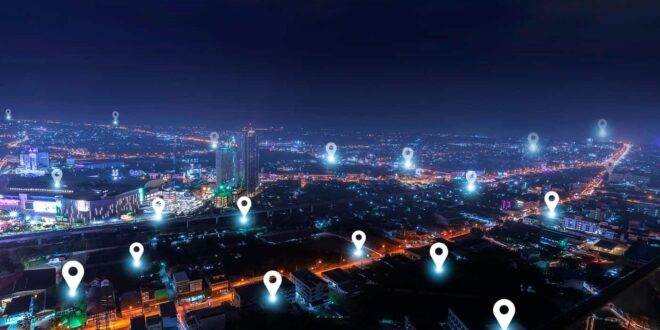If there is a concept that we hear more and more, it is the smart city or Smart City, but what does it mean for a city to be smart? In this post we are going to explain it and, in addition, see some examples of Smart Cities around the world and in Spain, to help better understand what are the elements that make a city a smart city?
What is a smart city?
The smart city or Smart Cities is the answer to the problems that current cities will have to face (and in some cases already face) in the near future, such as overpopulation (it is estimated that by 2050, 85% of the world’s population will live in cities), energy supply, CO 2 emissions, road traffic management and planning, supply of goods and services and raw materials or provision of health and safety services for the entire population.
In other words, smart cities are those that apply information and communication technologies (ICT) to face these challenges, providing them with infrastructures that guarantee:
- A sustainable and respectful development with the environment.
- Increase the quality of life of citizens.
- Manage available resources more effectively.
- Promote an active participation of citizens.
The truth is that the smart city is already a reality and, as we will see later, there are many cities that can already use this adjective to describe themselves, but there is still a long way to go. It is expected that thanks to the arrival of 5G, the development of the IoT (Internet of Things) and better management, smart and sustainable cities will become a much more widespread reality. Of course, for all this to work, citizen participation will be essential, since many actions will depend on them.
In addition, smart cities are a city model that is fundamentally oriented to people, to improve their quality of life.
Also know about missouri time zone.
What conditions must a city acquire to become “Smart”?
For a city to be considered “Smart” it must meet a series of conditions:
- Economic and social development must not only be respectful with the environment, but completely sustainable.
- It must be able to optimally manage its natural resources, for which it must have the participation of citizens.
- Both the citizenship and the administrative institutions of the city, as well as private organizations that have their headquarters in the city, must be committed to the sustainable and participatory development of the city.
- Technological solutions should be used that help make the lives of citizens easier and more comfortable.
- Citizens must actively contribute to the use and promotion of alternatives offered by new technologies and help with sustainable development.
- For what public administrations must inform and train citizens.
Thus, a smart city model would apply the following measures in these key sectors:
- Environment: Use of systems that allow energy saving, efficient water consumption, promotion of recycling, reduction of greenhouse gases, promotion of mobility (use of public and private electric vehicles).
- Urban planning: Optimization of public transport, efficient management of private traffic, construction of Smart Buildings (intelligent and sustainable buildings), change of public lighting for LED systems and adaptations of consumption, automatic and intelligent irrigation of gardens.
- Administration and government: Commitment to administration as telematics as possible, use of online payment platforms, cloud environments, mobile broadband networks and free public Wi-Fi networks.
- Health: Implementation of telemedicine systems, telecare, alerts to automatic emergency services when risk situations occur for the elderly or minors or for a large part of the citizenry.
- Security: Centralization of emergency and security services in a single integrated center, which helps reduce response times.
- Sensors: Through the placement of smart sensors in the city, to collect data and information from the city, it can be kept connected and informed at all times, to give the necessary instructions to each subsystem (for example, if at night no one walks on a street, you can lower the intensity of the lighting). The data collected by these smart sensors will serve to respond to situations in real time and to predict possible scenarios that may arise (some examples of what these sensors measure: radiation, pollution, noise levels, etc.).
Top 6 Smart Cities in the world
Now that we know what is meant by smart city, let’s see which is the top 6 smart cities in the world according to the IESE Cities in Motion Index, which has analyzed 174 cities in 80 countries (corresponding to the year 2019). To make this ranking, 9 key aspects are taken into account:
- Economy
- Human capital
- Governance
- Urban planification
- Public Management
- Technology
- Environment
- International projection
- Social cohesion
- Mobility and transportation
London
The ranking is led by the capital of the United Kingdom thanks to its good results in international projection, human capital, mobility and transport and economy. It must improve in social cohesion and environment, positions where it scales year after year, on its way to becoming a complete Smart Citie.
New York
New York came in second place thanks to its results in human capital, urban planning, and mobility and transportation. If it is not in the lead, it is because it has the same shortcomings as London, but with one score: social cohesion and the environment.
Amsterdam
Amsterdam was classified a third place. The capital of the Netherlands stands out in the same aspects as the first two cities in the ranking (although lower than these) and adds better results in social cohesion.
Pakistan
Lahore Smart City has entered the top-ranking housing societies. The smart features of the society make it the most sought-after residential scheme brought to you by Tajarat . The construction phase is also being carried out in a manner that will revolutionize smart and eco-friendly construction. The designing of the building also lets the society significantly decrease the carbon footprint.
Zurich
But if we talk about social cohesion, the city with the best qualification in this respect is Zurich; The Swiss capital achieves this result thanks to its low homicide and crime rate, as well as having one of the highest happiness rates in the world and having obtained the highest rating as a favorable environment for the development of women.
Reykjavik
Reykjavik enters the top 6 thanks to its position on environmental issues; not only for its reduction in pollution, but also for its great use of renewable water sources.
Wellington
The last city in this ranking is Wellington, the capital of New Zealand is also listed here for its low levels of pollution and reduced pollution.
Spain: What is the national network of smart cities?
In Spain, it is also committed to the development of Smart Cities and for this the Spanish Network of Smart Cities (RECI) began to be created in 2011. The signing of the Manifesto for Smart Cities. Innovation for progress, was committed to creating an open network to promote economic, social and business progress in cities through innovation and knowledge, relying on ICT. Finally, the RECI would be officially created in 2012, it continues to function today and is made up of 83 Spanish cities committed to implementing these smart city models and systems.
Examples of smart cities in Spain
Next we are going to see examples of smart cities in Spain, it is worth mentioning that Madrid and Barcelona appeared in positions 24 and 28 respectively in the IESE Cities in Motion Index that we mentioned above.
The Barcelona experience
In Barcelona, ICT is committed to executing citizen services, such as mobility or administration. To begin with, more than a million telemeters have been installed in the city, to improve the capacity for forecasting and adapting electricity consumption.
The city has also become a promoter of the electric vehicle, with actions such as the creation of the first Endesa energy island, a fast charging point, implemented in a service station in the 22nd district.
It plans to install LED technology to reduce consumption and light pollution from urban lighting.
Read more: The Ultimate Cleaning Guide for Your Wellies
The Madrid model
Examples of smart city systems in Madrid can be found in the Integrated Center for Security and Emergencies (CISEM), through which bodies such as the Police or the Samur are coordinated and organized and which has managed to reduce the response time below of the 8 minutes.
Along these lines, we also have mobility control centers that measure traffic flow in real time, either in the city center or the M-30. For this, burial sensors are used that count the number of cars that pass through the streets.
Smart city Malaga
In Malaga they have focused on energy management on their way to the smart city. The integration of renewable sources in the electricity grid has been promoted to increase efficiency and reduce CO 2 emissions. Tele-meters have been installed, as well as systems to automate the network in La Misericordia beach, along with distributed generation and intelligent vehicle charging infrastructure. The idea is also to bring this energy control system to homes.
For this, 17,000 smart meters have been installed, of which 50 have energy efficiency solutions for the home. Public buildings also have these systems and on the street 100 luminaires have been replaced by others with LED and halide technology, managed with a point-to-point control system.
Smart city Valencia
Valencia is another example of a city that is on the right path towards the smart city. In 2018, it created the Smart City Office to manage a whole series of competencies related to this matter, from advice, coordination and direction, through the creation of projects, to training in new products and technologies.
These are integrated plans to promote measures that help the development of the smart city, such as urban transformation, construction of smart buildings and improvements to the transport network.
Smart Santander
Santander has placed about 12,000 smart sensors throughout the city; these are in charge of collecting information on the state of the same, from traffic, through pollution, to the weather, or irrigation sensors based on a schedule based on the schedule.
As you have seen throughout the entrance, smart and sustainable cities are beginning to be a reality, although we still have a long way to go; In Europe after reaching the deadline for Agenda 20-20, many of these objectives have now been transferred to the 2030 agenda. To a large extent, achieving them depends on the administrations, but in another large part on the citizens, because one element key to all Smart Citie is the Smart Citizen (the intelligent citizen).
 HammBurg Be informed with latest news, reviews, entertainment, lifestyle tips, and much more.
HammBurg Be informed with latest news, reviews, entertainment, lifestyle tips, and much more.




